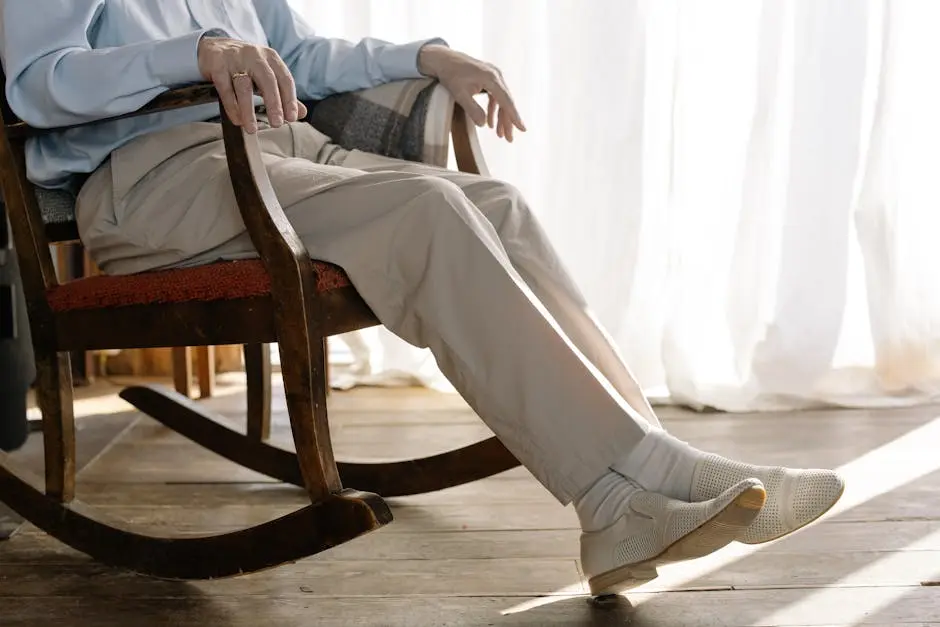Choosing the right chair for elderly individuals goes beyond aesthetics and style. It’s an essential consideration to ensure both safety and comfort, improving their quality of life. In this guide, we will explore the features and factors to consider when selecting the ideal chair for seniors in the US.
Understanding the Needs of Seniors
Different elderly individuals have varying needs based on their mobility, health conditions, and living environments. Recognizing these needs is the first step in choosing the perfect chair. For instance, seniors dealing with arthritis might prioritize chairs with easy-recline features which alleviate joint pain. Additionally, understanding a senior’s daily activities, such as family gatherings or time spent reading, can help determine if features like high back support or integrated reading lights are necessary. It’s crucial to approach this selection with empathy, considering how these chairs will integrate into their daily routines and play a role in their autonomy and comfort.
Furthermore, the recognition of these needs extends to the choice of materials and structure. Upholstery that’s soft yet durable can make a huge difference in the comfort provided to seniors who may have sensitive skin or need to sit for extended periods. This needs to be coupled with understanding whether the chair should focus more on comfort, like the plush seating found in our Heritage Collection, or on assistive technology, such as lift mechanisms helping users to stand with ease.
The Importance of Ergonomic Design
Chairs with ergonomic designs can greatly reduce strain and discomfort. Look for features like lumbar support and adjustable configurations to accommodate different body types and preferences. Ergonomics ensures that the body is supported in a manner that reduces stress on the spine and muscles, promoting better posture and reducing pain, which is crucial given that improper seating can exacerbate or even cause chronic discomfort. The design elements, such as supportive armrests or adjustable footrests, can also prevent issues like numbness and improve circulation, thus addressing several health concerns simultaneously.
Ergonomic chairs often come with customizable features that can be tailored specifically to an individual’s needs. For example, the ability to adjust seat depth and chair height ensures the furniture aligns perfectly with the user’s body dimensions, thus optimizing comfort levels. Some models from the Essential Collection offer advanced ergonomic solutions that can help maintain independence by making it easy for seniors to adjust their seat positions without requiring assistance.
Safety Features to Consider
Safety is paramount. Chairs for the elderly should include features such as stable bases, non-slip surfaces, and strategically placed armrests to aid in standing and sitting. Such features are particularly important for seniors experiencing balance issues or weakened physical strength. Non-slip materials prevent accidental falls, especially on smooth or hardwood floors, augmenting daily safety measures. Moreover, features like lockable wheels can add an extra layer of safety by securing the chair when in use, thus preventing unintended movement which could lead to falls or other accidents.
For many, lift chairs could be a superior choice due to their ability to assist with sitting and standing. As recommended in this guide, considering chairs with additional safety mechanisms like reclining positions that lock in place or extendable footrests can be extremely helpful. These features are not merely convenient; they ensure the chair is a safe-haven in one’s home, secured against unexpected shifts that could potentially harm the user.
Material Matters: Fabric and Cushioning
Selecting the right materials ensures durability and comfort. Opt for easy-to-clean fabrics and cushioning that provides adequate support while being gentle on sensitive skin. Materials like plush microsuede or performance fabrics offer the perfect blend of comfort, aesthetic appeal, and practicality. It’s important to keep in mind that elderly skin can be more sensitive, therefore hypoallergenic materials that prevent irritation or allergic reactions are advisable. Additionally, cushioning should provide not only comfort but also sufficient pressure relief to prevent discomfort or health issues from prolonged sitting.
Adjustability for Personalized Comfort
Adjustable chairs allow seniors to customize their seating position. Features like reclining functions and adjustable heights can make a significant difference in daily use. Recliners that offer multiple positions help distribute pressure evenly across the body, thus reducing the likelihood of developing pressure sores. The ability for a chair to adapt to various recline positions also assists in accommodating activities such as reading or watching television, allowing seniors to engage in their usual hobbies with added comfort and lessened strain.
Stylish Yet Practical Choices
Style should not be sacrificed for comfort. Nowadays, many chairs offer a balance of aesthetics and functionality, making it easier to find a chair that fits both the decor and needs of the user. Contemporary lift chairs often feature sleek designs that integrate seamlessly into modern living spaces, without being conspicuous. More traditional wood and fabric combinations lend elegance while still prioritizing ergonomic comfort.
Evaluating Space and Mobility
Consider the space where the chair will be placed and its impact on mobility. Chairs that are easy to move and do not take up excessive space are crucial for maintaining accessibility. For smaller living rooms, a wall-hugging recliner could be an ideal option as it requires minimal clearance from the wall to fully recline. By understanding spatial dynamics, one can choose a seat that fits into the room’s layout without obstructing pathways or causing restrictions in movement, thus maintaining practicality alongside comfort.
On top of mobility considerations, ensure to account for the chair’s footprint in the context of room aesthetics. The goal is to seamlessly blend the chair into the existing environment without compromising on the user’s needs. Compact and strategically designed chairs can help maximize space efficiency, making transitions smoother not just within the chair but in the environment as a whole. This consideration can effectively elevate the living space into a harmonious combination of accessibility and style.


















